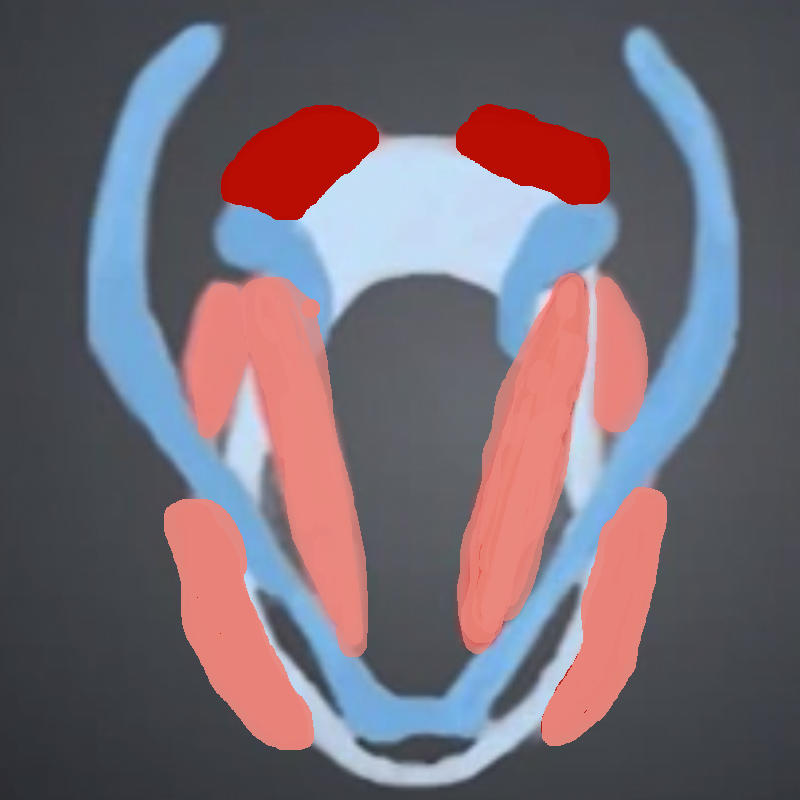
The PCA can be accessed by passing a needle posteriorly through the cricothyroid membrane, airway, and cricoid cartilage or by rotating the larynx manually and passing the electrode posteriorly to the thyroid lamina. The lateral approach requires a good mobilization of the whole larynx during the procedure, which can cause discomfort to the patient. The midline approach is only successful in not totally ossified cricoids. However, even in older patients, the cricoid cartilage is rarely completely ossified.
Insertion of the electrode too cranially is a common reason for difficulties in locating the PCA. This is often due to the fact that the PCA lies more caudally than assumed by many physicians.
For the midline approach, again, the cricothyroid notch is the anatomic reference for the needle insertion. The needle pierces the skin and penetrates the cricothyroid ligament in the midline in a sagittal direction.
After entering the airway, irritation of the mucosa may cause the patient to cough. To avoid further trauma while coughing, a short interruption without needle movement while the patient is breathing slowly should help the patient to adapt to the sensation. Approximately 5–10 mm lateral to the midline, the posterior mucosa of the airway is penetrated.
By slowly rotating the needle, it is drilled through the lamina of the cricoid cartilage. Having penetrated the whole cartilage, the tip of the needle should be right in the PCA muscle. Pushing any further will cause a penetration of the cricopharyngeal muscle.
EMG Activity
- A burst of sine waves modulated by phonation indicates that the electrode tip is vibrating freely in the airway.
- The correct position is confirmed by detecting increased EMG activity during sniffing, and considerably weaker EMG activity during swallowing and phonation of the sound /i:/.
- If the needle is placed too deeply, recording the activity of the cricopharyngeal muscle, a strong constant EMG activity will be observable, decreasing during swallowing.
Penetrating the cricoid cartilage bears the theoretical risk of a local infection of the bradytroph cartilage. If the patient shows any postinterventional signs of infection, a systemic antibiosis should be started.
Click here to go back to Transcutaneous LEMG.
